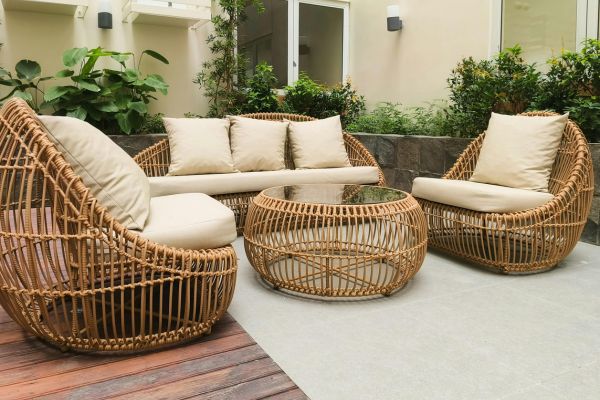In the age of social media and keywords turned catch phrase, those of us who garden and those who hope to garden and those who are only mildly garden curious to hear or read about a lot of gardens. There are Zen gardens, tranquility gardens, lasagna gardens, pizza gardens, native habitat gardens, memory gardens, rain gardens, and butterfly gardens, just to name a few. In any given region and climate, though, there is tremendous possibility for combining the roles of more than one garden. Three of the easiest gardens to combine are butterfly, habitat, and rain gardens. And making such a combination is easy enough that kids quite often do it by nature as they love to choose bold blooms, bright colors, interesting textures, and plants representing history and culture.
The purpose of each of these gardens might seem obvious enough from the name, but understanding the role each plays in your community, state, even the world provides a context for both children and adults. Using the opportunity to educate through gardens, every green enthusiast stands to make global improvements. Let’s call it the Butterfly Garden Effect that every positive motion, even the tiniest swoop of a fluttering wing, contributes to the evolution of a better world for all of us, from the most sentient creatures on the planet to the tiniest contributors.
The Role of Butterfly Gardens
Butterfly gardens contribute three very basic benefits:
- support for local and migrating butterflies
- beautification for communities
- attraction for a broad range of pollinators and other wildlife
Wherever butterflies flutter by, expect to find a wide range of other pollinators, beneficial insects, and birds. It’s the circle of life, as they say, that makes butterfly gardens so crucial to ecosystems. Attracted to color, flavor, fragrance, and texture in your garden, butterflies flit from bloom to bloom, pollinating your garden as they do. Vivid and eye-catching they, in turn, attract a wide variety of prey that belong in your garden, too. Every garden that attracts butterflies benefits from their careful grooming of blooms and the role they play in attracting others who tend, pollinate, fertilize, and de-bug the garden.
The Role of Habitat Gardens
By nature of the fact that they attract a wide variety of wildlife, butterfly gardens easily double as habitat gardens whenever shrubs and/or trees are incorporated into the design. Essentially, habitat gardens are homes for various insects and animals. Habitat gardens provide:
- shelter
- food
- water
- protection
- solace
to various creatures, including humans who cultivate them as places of rest and tranquility.
The Role of Rain Gardens
True to name, rain gardens take advantage of storm runoff to irrigate gardens, but there is a lot more going on beneath the surface. Designed to take advantage of rainwater runoff, rain gardens also:
- direct water to low spots
- slow water to negate the possibility of erosion
- percolate runoff to promote filtering/cleaning of polluted water
- assist in drainage to minimize standing water zones
- guide filtered water to bodies such as streams, creeks, rivers, lakes and ponds, and even seas and oceans
To ensure the success and longevity of such your rain garden, incorporate native and noninvasive plants that are up to the task of handling the microclimate forming there. Rain gardens present two main extremes in irrigation: deep wet and extreme dry, from time to time. Native plants that are tolerant of both wet and dry conditions are your best bet. Choosing plants of various root structures, too, will help the garden to do its best filtration work, too.
Among the underground portions that help filter minerals, debris, particulate matter, and pollutants are:
- shallow, webby roots that filter tiniest particles
- bulbs, rhizomes, and cormers (combinations) that hinder larger matter passage
- deep, even tap, roots, that channel runoff to deeper soils and layers
Combining Roles for Your Own Butterfly Habitat Rain Garden
Cultivating a garden that achieves all three purposes is as easy as selecting plants that serve the purpose of each garden style whenever possible. Native plants that provide blooms for adult butterflies and/or act as hosts for their caterpillar offspring may be blended with shrubs and trees that provide shelter for the other wildlife who will come to admire and consume the butterflies. In many cases, shrubs and trees may act as nectar suppliers and/or hosts for butterfly populations as well.
Among the native shrubs and trees you might choose for your butterfly habitat rain garden are:
- spicebush shrubs
- butterfly bushes
- chokeberry
- serviceberry bushes
- redbud trees
Each of these shrub and trees offers much to any garden as they are fragrant, beautiful, and excellent hosts for a variety of animals and bugs. Use these as focal points or boundaries to control entry and exit from your garden.
Layering these core contributors with a wide variety of blooming plants and attractive sedges/grasses will create a zone of comfort and peace for insects, animals, and humans alike. So long as the plants you choose are tolerant of the water sure to come through your garden and the dry conditions that occur once runoff has been directed away, the plant combinations are endless.
Meanwhile, every time children are included in the choices you make for your home or school garden, new ideas percolate to grow for amazing results.


